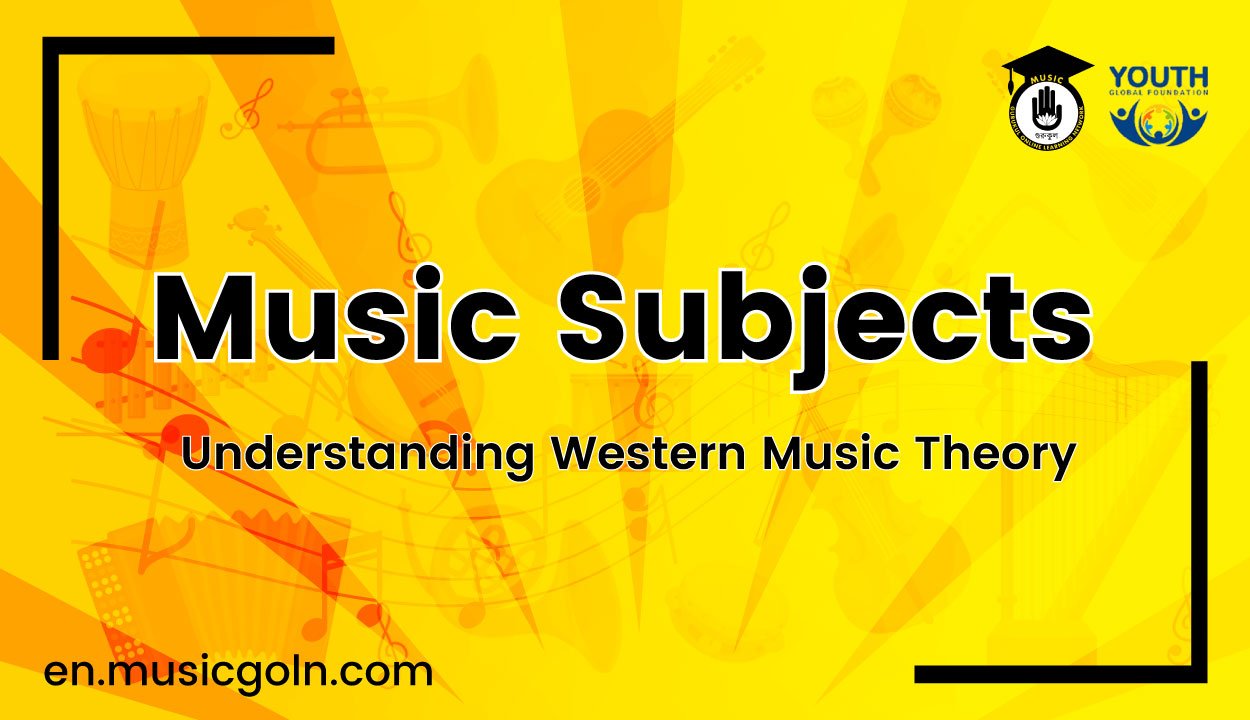Music subjects
Table of Contents
Music subjects | Understanding Western Music Theory
Notation
Musical notation and Sheet music Musical notation is the written or symbolized representation of music. This is most often achieved by the use of commonly understood graphic symbols and written verbal instructions and their abbreviations. Computer file formats have become important as well. Spoken language and hand signs are also used to symbolically represent music, primarily in teaching.
In standard Western music notation, tones are represented graphically by symbols (notes) placed on a staff or staves, the vertical axis corresponding to pitch and the horizontal axis corresponding to time. Note that head shapes, stems, flags, ties, and dots are used to indicate duration. Additional symbols indicate keys, dynamics, accents, rests, etc. Verbal instructions are often used to indicate tempo, technique, and other aspects.
There are many systems of music notation from different cultures and different ages. Traditional Western notation evolved during the Middle Ages and continues to be an area of experimentation and innovation.
Mathematics:
Mathematics is an integral part of music theory and has been for thousands of years. Early analyses of harmony and intervals (see Pythagoras) were often done with mathematical principles (e.g. dividing a string in half to find the octave or the pitch that is twice the frequency of the fundamental tone). Maths are also used to consider form and structure, stylistic tendencies, instrument manufacture, tuning systems, and many other aspects. Some
methods of composition, especially computer-assisted composition, rely on mathematics. (see Computer music) Many electronic instruments use a mathematical system known as MIDI (musical instrument digital interface) to specify and control pitch, duration, volume, tempo, and other aspects of sound.
Analysis:
The ana-lysis is the effort to describe and explain music.
Ana-lysis at once is a catch-all term describing the process of describing any portion of the music, as well as a specific field of formal ana-lysis or the field of stylistic ana-lysis. The formal ana-lysis attempts to answer questions of hierarchy and form, and the stylistic ana-lysis attempts to describe the style of the piece. These two distinct sub-fields often coincide.
Anal-ysis of harmonic structures is typically presented through a Roman numeral anal-ysis. However, over the years, as music and the theory of music have both grown, a multitude of methods of analyzing music have presented themselves. Two very popular methods, Schenkerian ana-lysis, and Neo-Riemannian ana-lysis have dominated much of the field. Schenkerian ana-lysis attempts to “reduce” music through layers of foreground, middle ground, and, eventually and importantly, the background.
Neo-Riemannian (or Transformational) ana-lysis began as an extension of Hugo Riemann’s theories of music and then expanded Riemann’s concepts of pitch and transformation into a mathematically rich language of ana-lysis. While both theories originated as methods of anal-ysis for tonal music, both have been extended to use in non-tonal music as well.
Ear training
Aural skills – the ability to identify musical patterns by ear, as opposed to by the reading of notation – form a key part of a musician’s craft and are usually taught alongside music theory. Most aural skills courses train the perception of relative pitch (the ability to determine pitch in an established context) and rhythm. Sight-singing – the ability to sing unfamiliar music without assistance is generally an important component of aural skills courses. Absolute pitch or perfect pitch describes the ability to recognize a particular audio frequency as a given musical note without any prior reference.
See also
- Pitch (psychophysics)
- AP Music Theory
- Theory of painting
- Musicology
- List of music theorists
